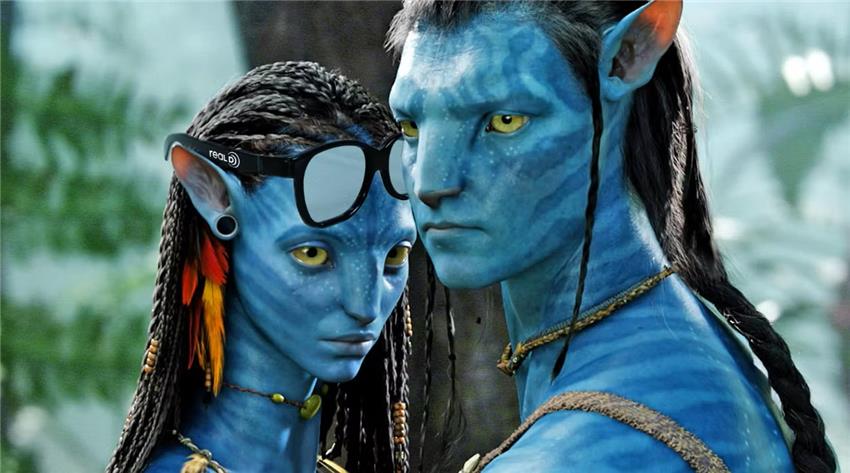
The Real Reason 3D Movies Failed - Studios Never Understood Negative Parallax
While industry experts blame dim projections, expensive tickets, and uncomfortable glasses for 3D cinema's decline, they're missing the real culprit. Studios had the technology to create truly immersive experiences that brought movies into the theater space, but their fear of audience discomfort led them to abandon the very technique - negative parallax - that could have made 3D essential viewing. Instead of revolutionary cinema, audiences got expensive wallpaper.
The death of 3D cinema has been greatly exaggerated—and greatly misunderstood. After Avatar's groundbreaking success in 2009 sparked a brief renaissance in stereoscopic filmmaking, the format has largely retreated to theme park attractions and the occasional blockbuster novelty. Industry analysts have spent years dissecting why 3D failed to maintain its momentum, pointing to familiar culprits: dim projections, expensive tickets, uncomfortable glasses, and rushed post-conversions that added depth without adding value.
But these explanations, while containing kernels of truth, miss the fundamental issue entirely. They're symptoms masquerading as causes, a collective smoke screen obscuring the real reason 3D cinema withered and died. The truth is far simpler and more damning: studios never understood how to use negative parallax effectively, and in their timidity, they killed the very thing that could have made 3D movies essential viewing.
The Usual Suspects: A Convenient Narrative
Ask any film industry executive why 3D failed, and you'll hear a rehearsed litany of technical and economic factors. Dark, murky images that robbed films of their visual splendor. Ticket prices that added $3-5 to an already expensive night out. Clunky glasses that slipped down noses and caused headaches. Post-conversion processes that slapped stereoscopic depth onto films never designed for it, creating the cinematic equivalent of colorization.
These criticisms aren't without merit, but they're also not insurmountable obstacles. The brightness issue was largely solved by improved projection technology and silver screens by 2012. Premium pricing has never stopped audiences from flocking to IMAX or other enhanced formats when they offer genuine value. Glasses technology improved dramatically, becoming lighter and more comfortable. Even post-conversion, when done properly with sufficient time and budget, could produce respectable results.
More tellingly, these same issues existed during 3D's brief golden age. Avatar was darker than its 2D counterpart. Tickets were expensive. Glasses were still glasses. Yet audiences embraced the format enthusiastically, driving Avatar to become the highest-grossing film of all time. The difference wasn't in the technical execution - it was in what audiences experienced once those glasses went on.
The Conservative Revolution
What studios delivered in the post-Avatar era was 3D cinema at its most timid and conservative. Terrified of causing audience discomfort or complaints, filmmakers and exhibitors retreated into safe, barely perceptible depth that added almost nothing to the viewing experience. The vast majority of 3D films focused exclusively on positive parallax objects appearing to recede behind the screen plane, creating windows into distant worlds but never truly bringing those worlds into the theater.
This approach fundamentally misunderstood what made 3D compelling. Positive parallax creates the illusion of looking through a window, but it's an illusion audiences can get from any well-composed 2D film with good depth of field. The real magic of stereoscopic cinema lies in negative parallax-the technique that makes objects appear to float in front of the screen, extending into the audience's space and creating a genuinely three-dimensional environment that no flat screen can replicate.
Studios treated negative parallax like a dangerous weapon to be used sparingly, if at all. When they did employ it, it was typically for cheap "gotcha" moments: a spear thrust toward the camera, a baseball flying at the audience, debris from an explosion. These gimmicky applications gave negative parallax a reputation as a novelty rather than a legitimate storytelling tool, reinforcing the industry's reluctance to explore its potential.
The Road Not Taken
Imagine if studios had embraced negative parallax as enthusiastically as they embraced CGI or color correction. Picture films where characters' hands gesture naturally into the audience space during intimate dialogue scenes, where architectural elements frame the action by extending beyond the screen boundaries, where the entire z-axis becomes a canvas for visual storytelling rather than just a shallow depth cue.
This wasn't impossible or even particularly difficult. The technology existed. A few films demonstrated its potential: Hugo used negative parallax to create genuinely immersive environments where clockwork mechanisms seemed to tick in the theater air. Life of Pi brought audiences into the lifeboat, making them feel like passengers rather than observers. These films understood that negative parallax wasn't about cheap thrills-it was about presence, about making audiences feel like participants in the story rather than distant viewers.
But these examples remained exceptions. For every film that used negative parallax meaningfully, dozens more treated 3D as an afterthought, a post-production checkbox that added minimal value to the viewing experience. Studios consistently chose the path of least resistance, creating 3D versions that were barely distinguishable from their 2D counterparts once audiences adjusted to wearing glasses.
The Economics of Differentiation
This conservative approach doomed 3D from an economic standpoint as much as an artistic one. Audiences aren't stupid; they can recognize when they're being asked to pay premium prices for a marginal experience. When 3D films offered nothing that couldn't be achieved on a regular screen, the format became an expensive novelty rather than a legitimate premium experience.
True negative parallax utilization would have created an experience that simply couldn't be replicated in 2D, justifying the extra cost and inconvenience. Instead of selling audiences on deeper colors or sharper images-improvements they could barely perceive-studios could have sold them on genuine dimensional storytelling, on being inside the movie rather than watching it from outside.
The irony is profound: in their effort to avoid alienating audiences with aggressive 3D effects, studios created something far worse-boring 3D that alienated audiences through indifference. They solved the wrong problem entirely.
Beyond the Smoke Screen
The commonly cited reasons for 3D's decline—darkness, cost, discomfort—were never the real issues. They were convenient explanations that allowed studios to avoid confronting their own creative failures. Audiences didn't reject 3D because it was too immersive or too different from traditional cinema. They rejected it because it wasn't immersive or different enough.
Every other major innovation in cinema history succeeded by offering something genuinely new: sound gave characters voices, color brought worlds to life, widescreen expanded the scope of storytelling. 3D had the potential to make audiences feel present in the story, to break down the barrier between viewer and narrative. Instead, studios used it to create slightly deeper wallpaper.
The failure of 3D cinema isn't a story about technological limitations or economic pressures. It's a story about creative cowardice, about an industry so afraid of taking risks that it killed the very innovation it was trying to promote. In avoiding the bold use of negative parallax that could have revolutionized cinema, studios ensured that 3D would remain a footnote rather than a chapter in film history.
The glasses are gathering dust in theater storage rooms now, and the blame falls not on audiences who couldn't appreciate the format, but on an industry that never gave them a reason to. 3D didn't fail because it was too radical—it failed because it was never radical enough.
